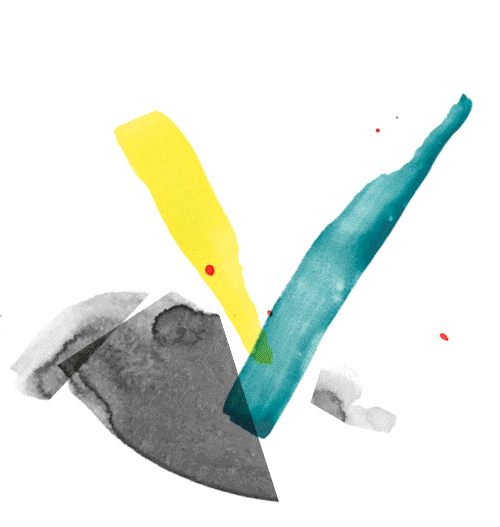

Sign up for our newsletters. You can change the settings or unsubscribe at any time.
Thank you for your subscription. We have sent you an e-mail with a confirmation link.


exp. 1
exp. 2
exp. 3

Grupo Experimental de Cine
Venue: 11th Berlin Biennale c/o ExRotaprint
Was also part of: exp. 1
Grupo Experimental de Cine
Alfredo Echániz, Gabriel Peluffo, Walter Tournier
Alfredo Echániz, born 1946 in Montevideo – lives and works in Buenos Aires, AR
Gabriel Peluffo, born 1946 in Montevideo – lives and works in Montevideo
Walter Tournier, born 1944 in Montevideo – lives and works Montevideo
In 1974, a group of architecture students made a 35mm animated film based on the book En la selva hay mucho por hacer [In the Jungle There Is Much to Do] by Mauricio Gatti. They were all part of the Cinemateca del Tercer Mundo (C3M), the Uruguayan epicenter of radical filmmakers based in Montevideo, which existed from 1969 until 1974. Walter Achugar, one of the C3M’s founders, encountered the book as a political prisoner himself, and on his release, decided to produce the film, inviting the three young C3M members to realize it. Using cutout stop-motion techniques to give life to Gatti’s drawings, the animation turned his verses into music, sung by Jorge Estela. After the military coup in 1973, Alfredo Echániz, Gabriel Peluffo, and Walter Tournier launched the film as the Grupo Experimental de Cine, as a way of anonymizing themselves amidst escalating repression. They finished the film in a makeshift manner, handcrafting it under precarious conditions while working in secret. The short film honors Gatti’s allegory in which anarchy is harmony.
This was the last work of the C3M, which was shut down by the dictatorship in 1974. They managed to screen the animation twice in Montevideo before most of its members were arrested or forced to flee the country. The film travelled with Achugar, who distributed it among political circles while in exile himself. Censored in Uruguay, the film won several awards abroad and was shown internationally in the 1970s and 1980s, particularly as part of political campaigns within exile communities against the military regimes of South America. Most copies of the film were eventually lost or destroyed in transit, as they followed the routes of those displaced. The present digitization was made using a copy kept by a German filmmaker who returned it to the directors some years ago. The persistent survival of En la selva hay mucho por hacer is in itself a testament to the power of solidarity.
Amelia Bande
Trailer: Grupo Experimental de Cine, En la selva hay mucho por hacer, 1974
I: Junto a las curadoras de la XI Berlin Biennale for Contemporary Art
Renata Cervetto, Lisette Lagnado
Conversation
Memorial to the Sinti and Roma Victims of National Socialism
Dani Karavan
Memorial
Undocumented Rumours and Disappearing Acts from Chile
María Berríos
Essay
Hatred Among Us
Lisette Lagnado
Essay
El primer nueva corónica y buen gobierno
Felipe Guamán Poma de Ayala
Chronicle
#fight4rojava
Graffiti
By using this website you agree to the use of cookies in accordance with our data privacy policy.

Grupo Experimental de Cine
Venue: 11th Berlin Biennale c/o ExRotaprint
Was also part of: exp. 1
Grupo Experimental de Cine
Alfredo Echániz, Gabriel Peluffo, Walter Tournier
Alfredo Echániz, born 1946 in Montevideo – lives and works in Buenos Aires, AR
Gabriel Peluffo, born 1946 in Montevideo – lives and works in Montevideo
Walter Tournier, born 1944 in Montevideo – lives and works Montevideo
In 1974, a group of architecture students made a 35mm animated film based on the book En la selva hay mucho por hacer [In the Jungle There Is Much to Do] by Mauricio Gatti. They were all part of the Cinemateca del Tercer Mundo (C3M), the Uruguayan epicenter of radical filmmakers based in Montevideo, which existed from 1969 until 1974. Walter Achugar, one of the C3M’s founders, encountered the book as a political prisoner himself, and on his release, decided to produce the film, inviting the three young C3M members to realize it. Using cutout stop-motion techniques to give life to Gatti’s drawings, the animation turned his verses into music, sung by Jorge Estela. After the military coup in 1973, Alfredo Echániz, Gabriel Peluffo, and Walter Tournier launched the film as the Grupo Experimental de Cine, as a way of anonymizing themselves amidst escalating repression. They finished the film in a makeshift manner, handcrafting it under precarious conditions while working in secret. The short film honors Gatti’s allegory in which anarchy is harmony.
This was the last work of the C3M, which was shut down by the dictatorship in 1974. They managed to screen the animation twice in Montevideo before most of its members were arrested or forced to flee the country. The film travelled with Achugar, who distributed it among political circles while in exile himself. Censored in Uruguay, the film won several awards abroad and was shown internationally in the 1970s and 1980s, particularly as part of political campaigns within exile communities against the military regimes of South America. Most copies of the film were eventually lost or destroyed in transit, as they followed the routes of those displaced. The present digitization was made using a copy kept by a German filmmaker who returned it to the directors some years ago. The persistent survival of En la selva hay mucho por hacer is in itself a testament to the power of solidarity.
Amelia Bande
Trailer: Grupo Experimental de Cine, En la selva hay mucho por hacer, 1974
Touching Feeling. Affect, Pedagogy, Performativity
Eve Kosofsky Sedgwick
Monograph
A World Without Bones
Agustín Pérez Rubio
„Klaus Eckschen: Hörspiel“
Die Remise
Hörspiel
Undocumented Rumours and Disappearing Acts from Chile
María Berríos
Essay
Weaving Solidarity
Renata Cervetto and Duygu Örs
Q&A
O Bailado do Deus Morto
Flávio de Carvalho
Play
By using this website you agree to the use of cookies in accordance with our data privacy policy.

Grupo Experimental de Cine
Venue: 11th Berlin Biennale c/o ExRotaprint
Was also part of: exp. 1
Grupo Experimental de Cine
Alfredo Echániz, Gabriel Peluffo, Walter Tournier
Alfredo Echániz, born 1946 in Montevideo – lives and works in Buenos Aires, AR
Gabriel Peluffo, born 1946 in Montevideo – lives and works in Montevideo
Walter Tournier, born 1944 in Montevideo – lives and works Montevideo
In 1974, a group of architecture students made a 35mm animated film based on the book En la selva hay mucho por hacer [In the Jungle There Is Much to Do] by Mauricio Gatti. They were all part of the Cinemateca del Tercer Mundo (C3M), the Uruguayan epicenter of radical filmmakers based in Montevideo, which existed from 1969 until 1974. Walter Achugar, one of the C3M’s founders, encountered the book as a political prisoner himself, and on his release, decided to produce the film, inviting the three young C3M members to realize it. Using cutout stop-motion techniques to give life to Gatti’s drawings, the animation turned his verses into music, sung by Jorge Estela. After the military coup in 1973, Alfredo Echániz, Gabriel Peluffo, and Walter Tournier launched the film as the Grupo Experimental de Cine, as a way of anonymizing themselves amidst escalating repression. They finished the film in a makeshift manner, handcrafting it under precarious conditions while working in secret. The short film honors Gatti’s allegory in which anarchy is harmony.
This was the last work of the C3M, which was shut down by the dictatorship in 1974. They managed to screen the animation twice in Montevideo before most of its members were arrested or forced to flee the country. The film travelled with Achugar, who distributed it among political circles while in exile himself. Censored in Uruguay, the film won several awards abroad and was shown internationally in the 1970s and 1980s, particularly as part of political campaigns within exile communities against the military regimes of South America. Most copies of the film were eventually lost or destroyed in transit, as they followed the routes of those displaced. The present digitization was made using a copy kept by a German filmmaker who returned it to the directors some years ago. The persistent survival of En la selva hay mucho por hacer is in itself a testament to the power of solidarity.
Amelia Bande
Trailer: Grupo Experimental de Cine, En la selva hay mucho por hacer, 1974
Undocumented Rumours and Disappearing Acts from Chile
María Berríos
Essay
Género y colonialidad en busca de claves de lectura y de un vocabulario estratégico descolonial
Rita Segato
Essay
Teatro da Vertigem
Monograph
A Moment of True Decolonization / Episode #6: Sinthujan Varatharajah. Constructing the Tamil Eelam State
The Funambulist / Sinthujan Varatharajah
Podcast
Feminist Health Care Research Group
Web archive
BLM KOREA ARTS
#BlackLivesMatter #BLMKoreaArts
Young-jun Tak
Statement
By using this website you agree to the use of cookies in accordance with our data privacy policy.

Grupo Experimental de Cine
Venue: 11th Berlin Biennale c/o ExRotaprint
Was also part of: exp. 1
Grupo Experimental de Cine
Alfredo Echániz, Gabriel Peluffo, Walter Tournier
Alfredo Echániz, born 1946 in Montevideo – lives and works in Buenos Aires, AR
Gabriel Peluffo, born 1946 in Montevideo – lives and works in Montevideo
Walter Tournier, born 1944 in Montevideo – lives and works Montevideo
In 1974, a group of architecture students made a 35mm animated film based on the book En la selva hay mucho por hacer [In the Jungle There Is Much to Do] by Mauricio Gatti. They were all part of the Cinemateca del Tercer Mundo (C3M), the Uruguayan epicenter of radical filmmakers based in Montevideo, which existed from 1969 until 1974. Walter Achugar, one of the C3M’s founders, encountered the book as a political prisoner himself, and on his release, decided to produce the film, inviting the three young C3M members to realize it. Using cutout stop-motion techniques to give life to Gatti’s drawings, the animation turned his verses into music, sung by Jorge Estela. After the military coup in 1973, Alfredo Echániz, Gabriel Peluffo, and Walter Tournier launched the film as the Grupo Experimental de Cine, as a way of anonymizing themselves amidst escalating repression. They finished the film in a makeshift manner, handcrafting it under precarious conditions while working in secret. The short film honors Gatti’s allegory in which anarchy is harmony.
This was the last work of the C3M, which was shut down by the dictatorship in 1974. They managed to screen the animation twice in Montevideo before most of its members were arrested or forced to flee the country. The film travelled with Achugar, who distributed it among political circles while in exile himself. Censored in Uruguay, the film won several awards abroad and was shown internationally in the 1970s and 1980s, particularly as part of political campaigns within exile communities against the military regimes of South America. Most copies of the film were eventually lost or destroyed in transit, as they followed the routes of those displaced. The present digitization was made using a copy kept by a German filmmaker who returned it to the directors some years ago. The persistent survival of En la selva hay mucho por hacer is in itself a testament to the power of solidarity.
Amelia Bande
Trailer: Grupo Experimental de Cine, En la selva hay mucho por hacer, 1974
By using this website you agree to the use of cookies in accordance with our data privacy policy.
By using this website you agree to the use of cookies in accordance with our data privacy policy.




